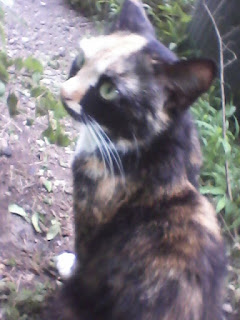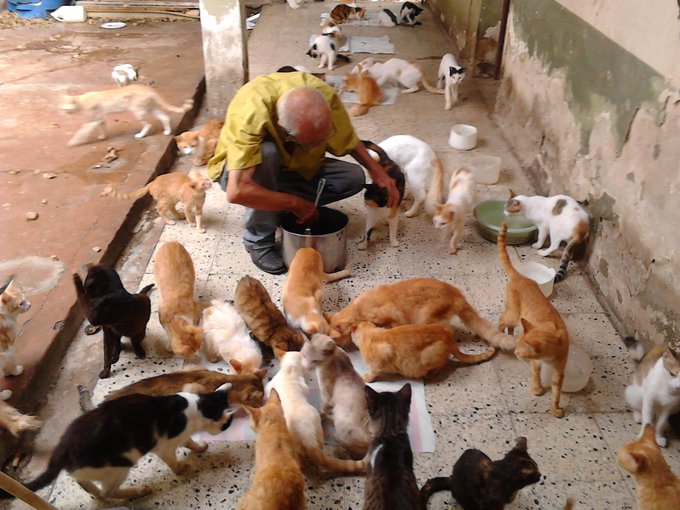This year, I'm seeing paper wasp populations recover slowly. I think the Brown Marmorated Stinkbugs, which can attack their eggs, have driven my favorite Polistes fuscatus away from my home, perhaps for a long time--and I miss them. Every time I swat a mosquito I miss them.
Fuscatus means "dark." P. fuscatus look black or brown at a distance. Close up, individuals have brown, black, and sometimes yellow patterns that help them recognize one another. There's a sampling of different color patterns at https://www.discoverlife.org/20/q?search=Polistes+fuscatus . Because of the yellow markings they're sometimes called "Golden" paper wasps--although the invasive nuisance species P. dominulus are much yellower, the way Spicebush Swallowtail butterflies are much blacker than Black Swallowtails. Another nickname is "Northern" paper wasps. I've not found formal studies of this, but from personal experience and what I see on the Internet, conspicuous yellow marks may be more common in populations further north. Mine almost never show yellow on their faces or abdomens, while the current Wikipedia page for this species features a stripey specimen from Quebec I would have thought had to be some other species. I've seen striped individual fuscatus in Maryland and Pennsylvania.
Anyway they're ferocious little predators whose severely limited minds have just enough room to learn that you are a friend, and remember that for the rest of their six or eight weeks of adult wasp life. Newly hatched P. fuscatus will fly at you in a threat display. If you stand still and remain calm, they classify you as a friend and will actively protect you from nuisance insects. In self-defense they will prod with the sharp bits at both head and tail ends, but they don't contain much venom, so being stung by P. fuscatus feels like being stabbed with a needle.
Apparently when a colony reaches a certain size the individuals spontaneously disperse, even when they're not threatened. I hope that's all that happened to my fuscatus, but I worry about the stinkbugs.
The paper wasps who've moved in are the slightly larger, much more venomous Polistes carolina. They're an interesting species to read about online. Their Wikipedia page (https://en.wikipedia.org/wiki/Polistes_carolina) has quite a lot about their complicated family life. Unlike some social insects, even P. fuscatus, they have only two genders. All females mature, reach their full size, can mate, can lay eggs, and can sting, although not all do mate, lay eggs, or sting. A colony has a dominant queen or "foundress," plus her sisters, daughters, nieces and so on, and their associated males. Males look like females (some have brown or yellow markings, and some are orange-red all over like the females) but don't sting. Scientists currently believe carolina and fuscatus evolved from a common ancestor but their social life is quite different. Fuscatus has a smaller, asexual female "worker" role in addition to the breeding males and females.
 |
| Image donated By Sesamehoneytart - Own work, CC BY-SA 4.0, https://commons.wikimedia.org/w/index.php?curid=45044419 |
Also moving in are what BugGuide.com identifies as probably Polistes canadensis, which look similar to P. carolina but have orange wings, and despite their name are not usually found in Canada--more likely in Mexico! Another similar-looking species, Polistes major, is normally yellow but has a sub-species that also have bright chestnut-color wings and bodies, P.m. castaneicolor. They also normally live in Central America so the appearance of either in Virginia indicates one of two things:
1. Global warming is prompting these tropical wasps to move north, encroaching on the territory of Northern Paper Wasps; or
2. Even the relatively informative web sites like Wikipedia, BugGuide, and DiscoverLife are confused, and P. carolina can sometimes have red-orange wings.
Though all three of the red paper wasp species are large (queens sometimes over an inch long, males and "workers" not much smaller) and their sting feels as if there was nothing else inside the little monsters but venom, the literature notes that P. major and P. canadensis chase wasps of other species. My red-winged red paper wasps don't. Then I consider the quality of writing at the web pages devoted to these species and to something called Polistes perplexus, and...I'm working with hypothesis 2.
There's another animal commonly known as a "red wasp," Polistes metricus. In colonial days this species was nicknamed "Jack Spaniard," from the days when Spain and England were at war and "Spaniards" had to be prepared to whip out their swords. They are red in front and black behind. The abdominal segment would be conspicuous for its size and length if it weren't distinctive in color. They sometimes act as if it were full of venom, to the point of pain, and they just had to go and sting somebody. Anybody. This species is rare around the Cat Sanctuary, probably because of a solid consensus that they needed killing. They give all wasps a bad name. But I don't see one of them in every decade. I thought of them because the "science" pages mention them as probably the closest relative to P. carolina.
P. carolina are described as generally a peaceable species, despite the pain their stings inflict. They don't chase other wasps, and are even said, by those who hang around watching paper wasp social life at the nest, to get along better among themselves than some other wasps seem to do. Jesse Stuart, a goodhearted writer, tried to upgrade this species' image by using "as peaceable as red wasps" as a stock phrase. It never caught on. People who've been stung by one don't care how peaceable these animals want to be. Aftereffects of a red wasp sting include a lingering feeling that the whole species need killing. I've not tried to do anything about the red wasps I've seen in the yard (all of them will attack a person they've seen attack one of them, and so will P. fuscatus, P. dominulus, and others); but when they get indoors I like to scoop them up in a matchbox and drop them into a fire.
This is because the founding queen of a red wasp colony once stung the side of my hand when I was ten or twelve or thereabouts, and half of my hand swelled up so that I couldn't bend two fingers for two days. I like most animals but there are limits to everything. I am about as fond of red wasps as I am of the board of directors of the Bayer Chemical Corporation.
But in spring another friendly mud-dauber wasp moved into the office. Like last year's Cobalt and Shimmer, she was iridescent in light, but more blue-green than cobalt blue. I called her Jade, for the color she showed under fluorescent light.
During her first week Jade seemed restless--not making threat displays toward me, but making them. Apparently she didn't think the office was big enough for another, more true-blue, mud-dauber queen and her. It was; after a few day they seemed to have settled down with the bluer-colored wasp based around the west window, further from me, and the greenish one around the north window.
According to BugGuide.com, there are four kinds of daubers whose iridescent black bodies can look more blue-green than blue. The one that looks like Jade is Chlorion aerarium, common enough to have an English nickname ("The Steel-Blue Cricket Hunter"), but the page for this species says that greenish ones are normally found in the Western States; Eastern specimens can be true blue or even purplish.
Jade's mate didn't seem to move into the office; I don't know whether he lived with Jade for any length of time. He was obviously a male dauber, but shorter than Cobalt's and Shimmer's mates, with shorter antennae and a bigger head, which was what made me think that Jade might be a different species.
She was certainly a friendly little thing. I'd learned from living with Cobalt and Shimmer, and with the fuscatus colony, that after the initial threat displays subside, these wasps' flying at me meant they were protecting me from a fly or mosquito. (Wasps buzz their wings loudly when making a threat display and make much less noise when chasing smaller insects.) So I held still and cooperated, one evening, and Jade gently picked a gnat out of my eyelashes.
If asked, earlier that day, I would have said I didn't imagine I'd ever be able to tolerate any wasp crawling around my eyes.
One evening the blue wasp, to whom I had not given a name, flew right at Jade. Jade dropped to the window sill, although she hadn't been physically hit, and lay still. I realized that we were going into her tenth week in the office. For a wasp ten weeks is old. Jade eventually got up and went out to hunt again, but during the next few days she seemed "old" and "tired."
At the end of the week I found Jade's dead body on the outside of the window sill. The blue wasp now moved into her territory and made a few threat displays toward me, which I ignored, but it was mere bluff. She was old for her kind of animal, too. At the end of the week I found her on the outside of the window sill, about a foot away from where I'd found Jade.
This weekend a new dauber moved in. She's blue. I've not given her a name, or made any attempt to observe whether she's more like Jade or like Cobalt and Shimmer.
So do they really hunt crickets? Jade lived and died in a season when our common field crickets are not active. BugGuide says crickets have been found in Chlorion nests. Jade spent much of her time outdoors and probably hunted whatever small, soft-bodied insects she found. While in the office she hunted gnats, flies, and mosquitoes.
 |
| Image donated to Flickr by David Bygott. Flickr images are supposed to be free for non-commercial use by members, of which I am one. If David Bygott objects to this use of this image, will he kindly notify me, and I'll pull it down. |
Growing up I've always been aware of species distinctions among paper wasps, hornets, and yellowjackets, but I always thought a dauber was a dauber. This is apparently not the case. BugGuide has an elaborate checklist to use for sorting through dozens of different blue-black, thread-waisted, annoying but harmless inch-long wasps...if you have a deceased individual and a magnifying glass where you go online, which I don't. I've only guessed the species identities of any of my daubers. I continue to be pleasantly surprised, though, that when Polistes aren't making them nervous they can be quite nice to have around.







